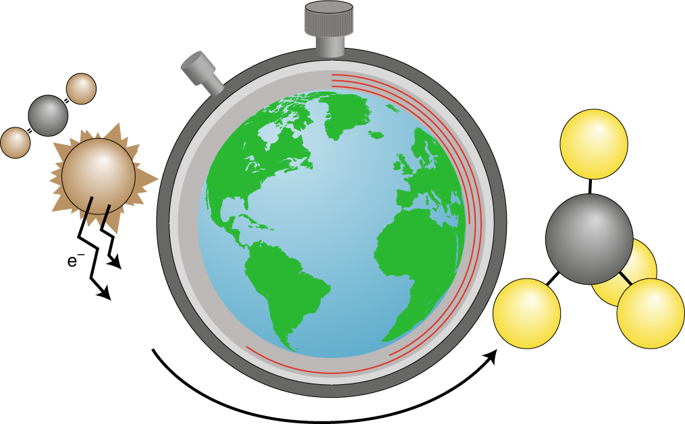Nature Catalysis ( IF 42.8 ) Pub Date : 2019-03-11 , DOI: 10.1038/s41929-019-0244-4 Charlotte Vogt , Matteo Monai , Gert Jan Kramer , Bert M. Weckhuysen

|
The Sabatier reaction (that is, CO2 methanation) is undergoing a revival for two main reasons. First, the power-to-gas concept offers the prospect of large-scale recycling of (point source) CO2 emissions, in combination with the use of large quantities of renewable energy to form methane. When this can be achieved in a cost-effective manner, it can use the gas distribution infrastructure that already exists. However, methanation is no simple panacea to the detrimental environmental effect of CO2 emissions, and reaction products other than methane should also be targeted. Second, methanation has been identified as an important reaction to facilitate long-term space exploration missions by space agencies, such as NASA. This Perspective discusses the current understanding of CO2 hydrogenation within these concepts, from fundamental mechanistic aspects to several parameters that will ultimately define its technical and economic feasibility on Earth and in space, as we transition into the era of small-molecule activation.
中文翻译:

Sabatier反应的复兴及其在地球和太空中的应用
Sabatier反应(即CO 2甲烷化)的复兴有两个主要原因。首先,以煤气为燃料的概念为大规模回收(点源)CO 2排放提供了前景,并结合了使用大量可再生能源形成甲烷的前景。如果可以以具有成本效益的方式实现这一目标,则可以使用已经存在的气体分配基础设施。但是,甲烷化并不是解决CO 2有害环境影响的简单灵丹妙药排放以及除甲烷以外的反应产物也应作为目标。其次,甲烷化已被认为是促进美国国家航空航天局(NASA)等太空机构进行长期太空探索任务的重要反应。此观点讨论了在这些概念中对CO 2加氢的当前理解,从基本的机械方面到几个参数,这些参数最终将定义它在地球和太空中的技术和经济可行性,因为我们正进入小分子活化时代。


















































 京公网安备 11010802027423号
京公网安备 11010802027423号